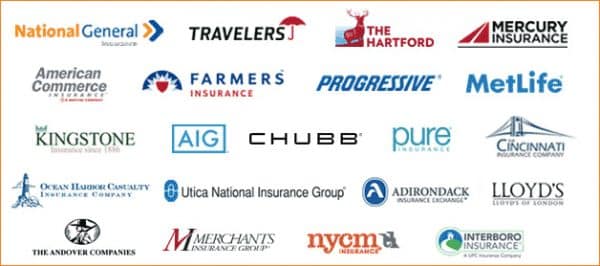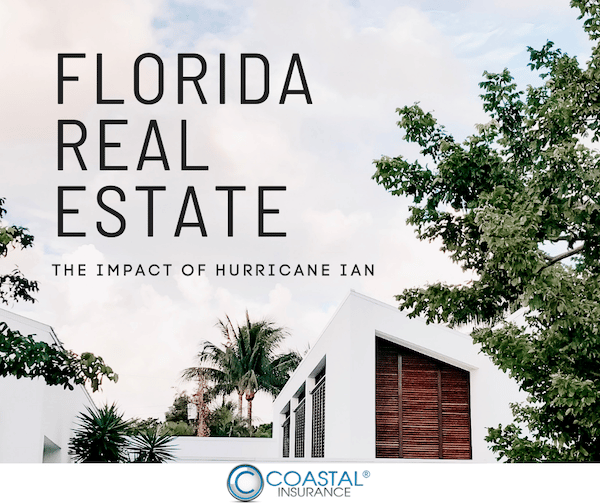Compare Prices & Start Saving Today!
Common Homeowners Insurance Discounts
New Homes may enjoy discounts up to 14%.
Security Systems such as deadbolt locks, simple alarm systems, and smoke detectors may reap discounts from 1-5%. Sophisticated monitoring services and integrated sprinkler systems may reduce your premiums as much as 20%.
Combined Policies: If you combine your automobile and homeowner policy with the same carrier you may obtain discounts from 5% to 15%.
Carrier Longevity: If you maintain your coverage with the same carrier for a number of years they will usually reward you with a discount.
Retired Homeowner: On average stays home longer and may be rewarded with a 5% discount.
Non-smoker: Some carriers reward non-smokers a 5% discount.
Verified Google Reviews
Home Insurance Belle Harbor NY
Coastal Insurance Solutions is a great and trusted company that can advise home owners on insurance in Belle Harbor, New York. We work with an incredible amount of companies– over 30! Our experience allows us to give you the best rate for your money because we check the market in just one incredibly fast and simple step. We can send our potential customers up to ten proposals as well, all for free, and give you our expert opinion on which company would be best for you by comparing the ratings, prices, and our very own claims experience with them! We know that you as a home owner have a financial investment for your home as well as an emotional investment– your family lives there! Therefore, we aim to give you the best possible price for your money while helping you to protect your assets.
Fill out the information form to find out more or simply give us a call. We’d love to help you get insured.
Get 10 FREE QUOTES from Top-Rated Insurance Companies
Homeowners Insurance Basic Coverages
Coverage A: Dwelling
Dwelling coverage covers the cost of rebuilding the house itself using like materials. This coverage also includes any permanent attachments, including central air conditioning equipment, heating and plumbing equipment, and similar attached items.
Coverage B: Other Structures
Fences, pools, gazebos, sheds, and other structures that are not attached to your home are covered by Coverage B, other structures coverage. The value of this coverage is usually set to 10% of the dwelling coverage amount but can be changed to a higher coverage amount if needed.
Coverage C: Personal Property
Personal belongings are described as personal property on your home insurance policy. This coverage would include common household items like televisions, furniture, clothing, and other common belongings. Personal property coverage is usually assigned a value of at least 50% of the dwelling coverage on a homeowners insurance policy, but this coverage amount can often be adjusted.
Many homeowners insurance policies cover personal property on an actual cash value basis. What this means is that if your personal property is lost, damaged, or destroyed in a covered claim, your insurer will pay a depreciated value based on wear and tear due to age. Some insurers provide an option for personal property coverage at replacement cost value, which covers your personal property for the full cost of replacement, typically for a slightly higher premium.
Certain types of items, such as jewelry, firearms, furs, and similar items have limited coverage on a homeowners insurance policy. These items can be added to your policy as an endorsement to insure them to their full value.
Coverage D: Additional Living Expenses
If a covered claim forces you out of your home temporarily while your home is being repaired, additional living expenses are covered by Coverage D. This can include the cost of hotels or of eating out and this coverage is designed to cover the difference between your normal living expenses and the higher temporary expenses you experience due to a claim. Typically, Coverage D is equal to 20% of the coverage amount for Coverage A, dwelling coverage.
Coverage E: Personal Liability
Coverage E, commonly known as personal liability coverage, protects you against lawsuits for bodily injury to others or damage to the property of others due to negligence. Coverage amounts typically start at $100,000, although most policies provide $300,000 of coverage or higher. Personal liability coverage on your home insurance also pays for your legal defense, which can be a sizable expense in itself.
Common risks include dog bites and slip and fall accidents, but accidental damage to the property of others is also covered.
Households with pools or children who have friends who visit your home may wish to consider a higher coverage amount. This coverage is available for all family members in the household.
Coverage F: Medical Payments
Your home insurance policy also provides coverage for small injuries to others that don’t involve a lawsuit. Accidents can happen, but many accidents are minor, only requiring basic medical attention.
Get 10 FREE QUOTES from Top-Rated Insurance Companies
All Risk vs. Named Peril
A homeowners insurance policy can be either an all-risk policy or a named peril policy, with the difference between the two being which risks to your home are covered by the policy. As its name suggests, an all-risk policy is more inclusive, providing coverage for almost all risks to your home except for specifically excluded risks.
A named peril homeowners insurance policy only provides coverage for the home that is specifically named as coverage items on your policy. Named peril policies also have specific exclusions to coverage while also excluding any risks that are not specifically named as covered perils.
Covered personal property perils may differ from those covered for the dwelling, depending on the type of policy. The five types of policies for single-family homes are HO-1, HO-2, HO-3, HO-3 with HO-15, and HO-8.
HO-1 Basic Homeowner
A basic homeowners insurance policy, sometimes called an HO-1 policy, provides coverage for fire and lightning, as well as wind and hail damage — but being a basic insurance policy, omits coverage for several other risks to homes. Due to consumer demand for broader coverage, this type of policy is not commonly available from insurers.
HO-2 Broad Basic Homeowner
An HO-2 homeowners insurance policy expands upon the coverage provided by an HO-1 policy by adding some additional perils to the coverage for the dwelling: falling objects, roof collapse due to the weight of ice or snow, building collapse, water damage due to bursting pipes or sudden leaks, frozen pipes, and damage from electrical surges.
HO-3 Special Extended Homeowner
Currently the most popular type of homeowners insurance policy, an HO-3 policy provides all-risk coverage for your dwelling while providing coverage for 18 named perils for your personal property. All of the coverages provided by an HO-2 policy apply to personal property on an HO-3 policy. Covered perils for the dwelling itself are limited only by named exclusions.
HO-3 with HO-15 Comprehensive
This type of policy does not limit coverage for personal property to named perils, instead of covering both your home and personal belongings for all perils except for those specifically excluded from your policy. Depending on the insurer, a similar type of comprehensive coverage may also be available through an HO-5 policy.
HO-8 Modified Homeowner
Coverage for historic homes is often provided through an HO-8 homeowners insurance policy, which provides limited coverage similar to an HO-1 policy but is designed to cover homes that may cost significantly more to rebuild than their market value.
Homeowner Insurance Tips Video
Get 10 FREE QUOTES from Top-Rated Insurance Companies
Information about Belle Harbor NY
Belle Harbor is a neighborhood in the New York City borough of Queens. It is a tight-knit, affluent community located on the western half of the Rockaway Peninsula, the southernmost area of the borough. A large number of residents are of Irish or Italian descent and are often members of the NYPD, FDNY, or a financial firm on Wall Street. Belle Harbor is typically referred to the area between Beach 126th and Beach 141st Streets. The neighborhood is part of Queens Community Board 14. According to the 2010 United States Census, the neighborhood, coupled with nearby Neponsit, had a population just over 5,400.
Belle Harbor is the site of the fatal 2001 crash of American Airlines Flight 587. It was further devastated by Hurricane Sandy on October 29, 2012, but has since been rebuilt.
The opening of passenger railroad service in 1880 to Rockaway Park from Long Island City and from Flatbush Terminal (now Atlantic Terminal) in downtown Brooklyn, via the Long Island Railroad’s Rockaway Beach Branch, facilitated population growth on the Rockaways Peninsula.
The makings of Belle Harbor began in 1900, when a New York State judge ordered that the land west of Rockaway Park be put up for auction. The area that makes up Belle Harbor and the neighboring community ofNeponsit was bought by Edward P. Hatch, whom after a couple years, sold it to the West Rockaway Land Company in 1907. The president of the company, Frederick J. Lancaster, who had earlier developed theEdgemere neighborhood, officially gave the community its name. Prior to Lancaster’s acquisition of the land, however, a group of men wishing to form a yacht club entered into an grant agreement with the West Rockaway Land Company in 1905. The group, which had named itself the Belle Harbor Yacht Club, bought property from the company for four-thousand dollars. The agreement included two-hundred square feet of land and thirty plots of upland. That same year the group received corporation status by the State of New York and by 1908 began participating in its first inter-club ocean races with some of the city’s other yacht clubs.
On November 12, 2001, American Airlines Flight 587, bound for Santo Domingo in the Dominican Republic, crashed in the center of Belle Harbor, killing all 260 passengers and crew on board the plane as well as five people on the ground. Many of the passengers on the plane were from the Dominican community in Washington Heights. After consultation with the families in the Belle Harbor and Washington Heights communities, a memorial was erected at Beach 116th Street in Rockaway Park, a major shopping district and transportation hub in the area, accessible to all. Although a temporary memorial was developed at the actual site of the disaster, on Newport Avenue, many still annually gravitate toward that area for commemoration. In 2001, a resident stated to The Guardian: “It’s impossible to understand unless you live here … Father Michael Geraghty, a priest quoted in the same article, said that it was common for people to live in the houses that their parents lived in and that many families lived in the same houses for generations. The neighborhood suffered heavy losses from the September 11, 2001, terrorist attacks.”









![IBA Top Retail Brokers 2024 Medal[88] IBA's Top Retail Broker 2023](https://coastalinsurancesolution.com/wp-content/uploads/2024/07/IBA-Top-Retail-Brokers-2024-Medal88.png)



